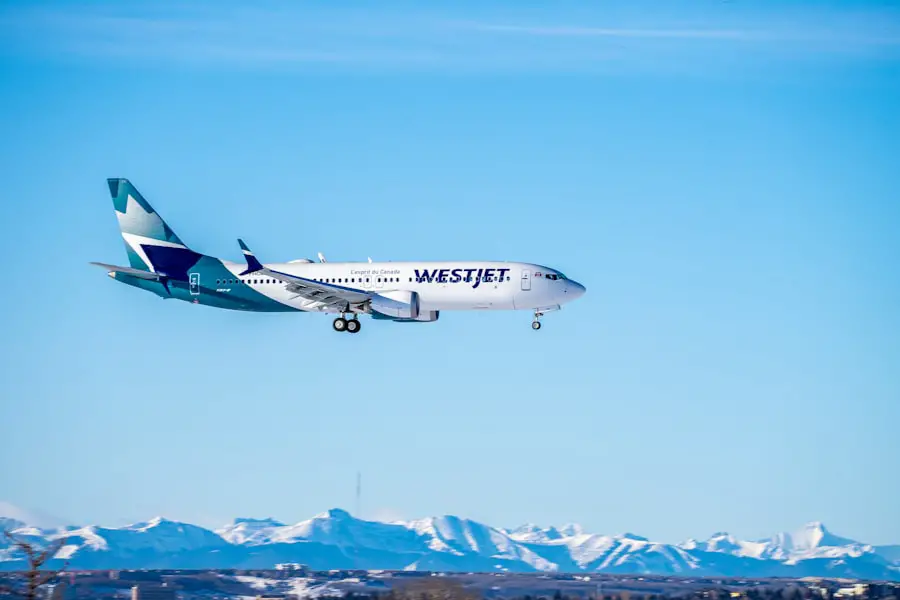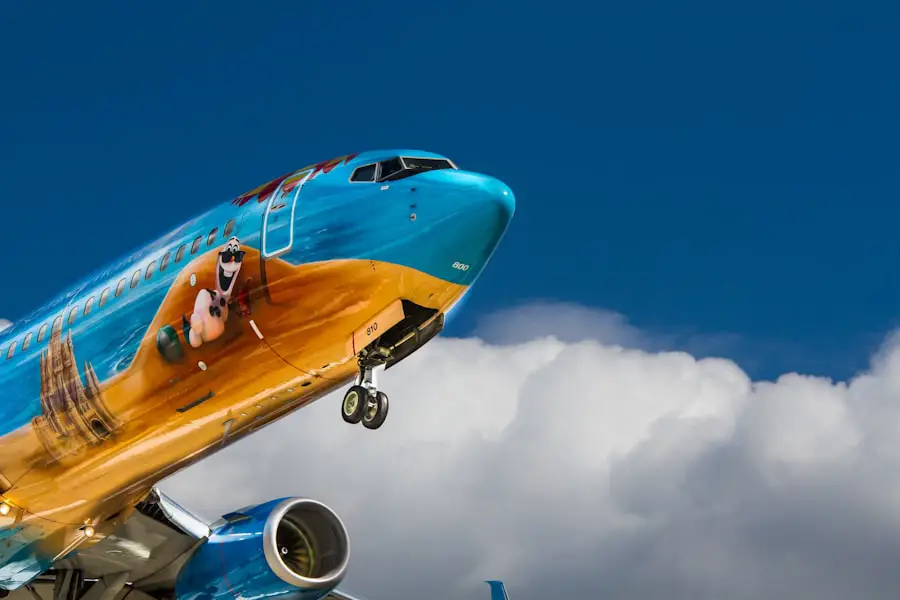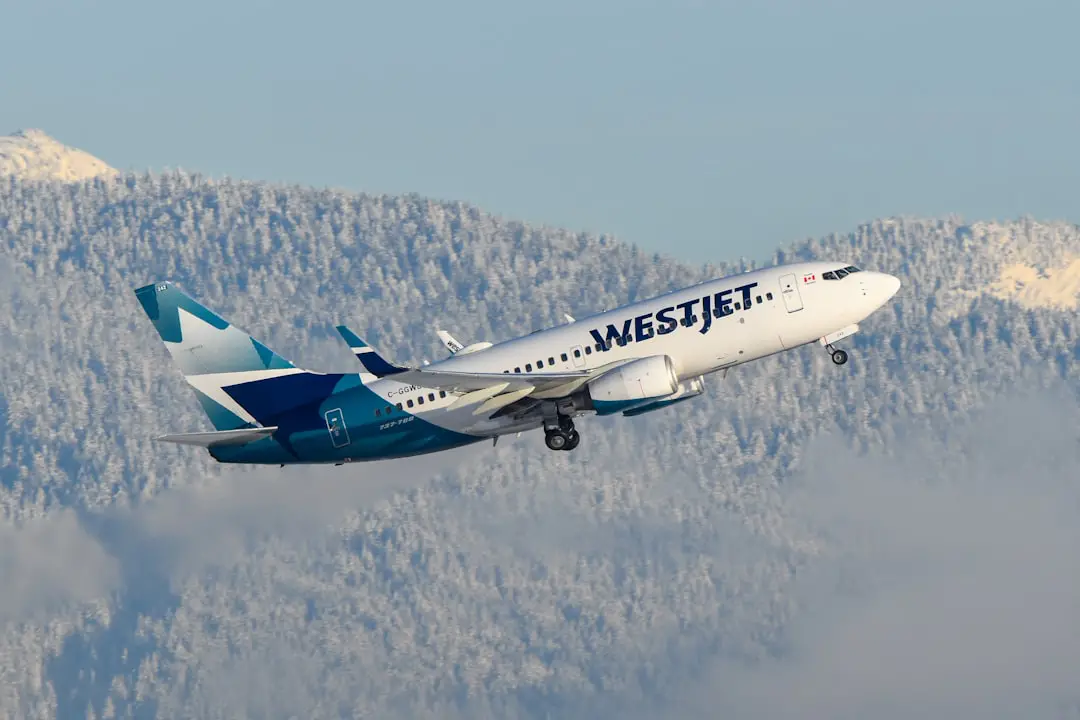WestJet Airlines, a prominent Canadian low-cost carrier, was founded in 1996 and has since grown to become one of the largest airlines in Canada. Headquartered in Calgary, Alberta, WestJet operates an extensive network of domestic and international flights, serving millions of passengers each year. The airline’s commitment to providing affordable travel options has made it a popular choice among Canadians and travelers alike.
With a fleet that includes Boeing 737s and Bombardier Q400s, WestJet has positioned itself as a key player in the North American aviation market. The airline’s growth trajectory has been marked by a focus on customer service and operational efficiency. WestJet has consistently sought to differentiate itself from competitors by fostering a culture of friendliness and hospitality among its staff.
This emphasis on customer experience is complemented by the airline’s commitment to safety, which is paramount in the aviation industry. As travelers increasingly prioritize safety in their travel decisions, understanding WestJet’s safety record and protocols becomes essential for potential passengers.
Key Takeaways
- WestJet is a Canadian low-cost airline that was founded in 1996 and has since grown to become one of the country’s largest airlines, operating domestic and international flights.
- WestJet has a strong safety record, with no fatal accidents in its history and a commitment to maintaining high safety standards.
- The airline has implemented various safety measures and protocols, including regular aircraft maintenance, crew training, and adherence to industry safety regulations.
- WestJet pilots and crew undergo rigorous training and hold the necessary qualifications to ensure the safety of passengers and the smooth operation of flights.
- The airline follows strict maintenance and inspection procedures to ensure the airworthiness of its aircraft and prevent mechanical issues.
Safety record of WestJet
WestJet’s safety record is a critical aspect of its reputation as an airline. Since its inception, the airline has maintained a commendable safety history, with no fatal accidents involving its aircraft. This impressive track record is a testament to the airline’s rigorous adherence to safety standards and protocols.
The airline has consistently received high marks from aviation safety organizations, which evaluate airlines based on various criteria, including operational performance and incident history. In addition to its accident-free history, WestJet has also been recognized for its proactive approach to safety management. The airline employs a comprehensive safety management system (SMS) that encompasses risk assessment, hazard identification, and continuous monitoring of safety performance.
This system allows WestJet to identify potential safety issues before they escalate into serious incidents, thereby reinforcing its commitment to maintaining a safe flying environment for passengers and crew alike.
Safety measures and protocols in place at WestJet

WestJet has implemented a variety of safety measures and protocols designed to ensure the well-being of its passengers and crew. One of the cornerstone elements of these measures is the airline’s Safety Management System (SMS), which integrates safety into all aspects of operations. This system includes regular audits, safety reporting mechanisms, and data analysis to identify trends and areas for improvement. By fostering a culture of safety awareness among employees, WestJet encourages staff to report any safety concerns without fear of reprisal. In addition to the SMS, WestJet adheres to strict regulatory requirements set forth by Transport Canada and other aviation authorities. These regulations cover various aspects of airline operations, including aircraft maintenance, crew training, and emergency procedures. The airline conducts regular safety drills and simulations to ensure that all personnel are well-prepared for any potential emergencies.
Furthermore, WestJet continuously reviews and updates its safety protocols in response to evolving industry standards and best practices.
Training and qualifications of WestJet pilots and crew
| Training and Qualifications | Pilots | Crew |
|---|---|---|
| Initial Training | Completion of approved training program | Completion of safety and emergency procedures training |
| Recurrent Training | Regular simulator training and proficiency checks | Regular safety and emergency procedures refresher training |
| Qualifications | Valid commercial pilot license, medical certificate, and type rating | Valid crew member certificate and recurrent training completion |
The training and qualifications of WestJet pilots and crew are fundamental components of the airline’s safety framework. All pilots undergo rigorous training programs that include both theoretical knowledge and practical flight experience. New pilots are required to complete an extensive ground school curriculum that covers aircraft systems, navigation, meteorology, and emergency procedures.
Following this initial training, pilots participate in simulator sessions that replicate various flight scenarios, including emergency situations. WestJet also places a strong emphasis on recurrent training for its pilots and crew members. This ongoing education ensures that all personnel remain current with the latest industry standards and operational procedures.
Pilots are required to complete regular proficiency checks and simulator evaluations to maintain their licenses and certifications. Additionally, flight attendants receive comprehensive training in safety procedures, first aid, and customer service, equipping them to handle a wide range of situations that may arise during flights.
Maintenance and inspection procedures at WestJet
Maintenance and inspection procedures are critical to ensuring the airworthiness of WestJet’s fleet. The airline follows a stringent maintenance program that complies with Transport Canada regulations and industry best practices. This program includes routine inspections, scheduled maintenance checks, and unscheduled repairs as needed.
Each aircraft undergoes regular maintenance checks at specified intervals, which can range from daily inspections to more comprehensive checks conducted every few months or years. WestJet employs a team of highly trained aircraft maintenance engineers who are responsible for conducting these inspections and repairs. These professionals are equipped with the knowledge and skills necessary to identify potential issues before they compromise safety.
The airline also utilizes advanced technology for monitoring aircraft performance and maintenance needs, allowing for proactive management of its fleet. By investing in state-of-the-art maintenance facilities and equipment, WestJet ensures that its aircraft remain in optimal condition for safe operations.
Incident response and communication at WestJet

In the event of an incident or emergency situation, WestJet has established protocols for effective incident response and communication. The airline’s incident response plan outlines clear procedures for managing emergencies, including communication with passengers, crew members, and relevant authorities. This plan is regularly reviewed and updated to reflect best practices in crisis management.
WestJet prioritizes transparent communication during incidents to keep passengers informed and reassured. The airline has trained its staff to handle various emergency scenarios with professionalism and empathy. In addition to internal communication protocols, WestJet maintains open lines of communication with external agencies such as airport authorities and emergency services to facilitate coordinated responses during emergencies.
This comprehensive approach ensures that all stakeholders are informed and that passenger safety remains the top priority.
Comparison of safety statistics with other airlines
When evaluating the safety record of WestJet, it is essential to compare its statistics with those of other airlines in the industry. According to various aviation safety databases, WestJet boasts one of the lowest accident rates among North American carriers. This favorable comparison highlights the effectiveness of the airline’s safety management practices and operational protocols.
For instance, while some airlines may experience incidents related to technical failures or human error, WestJet’s proactive approach to risk management has contributed to its impressive safety statistics. The airline’s commitment to continuous improvement in safety practices sets it apart from competitors who may not prioritize these measures as rigorously. By maintaining a strong focus on safety culture within the organization, WestJet has established itself as a leader in aviation safety.
Customer satisfaction and safety at WestJet
Customer satisfaction is closely linked to perceptions of safety in the airline industry. Passengers are more likely to choose an airline that they believe prioritizes their well-being during travel. WestJet has consistently received positive feedback from customers regarding its safety measures and overall service quality.
Surveys conducted by independent organizations often highlight passengers’ confidence in the airline’s commitment to maintaining high safety standards. Moreover, WestJet actively seeks customer feedback through various channels, including post-flight surveys and social media engagement. This feedback loop allows the airline to address any concerns related to safety or service promptly.
By fostering an open dialogue with customers, WestJet not only enhances its reputation but also reinforces its dedication to providing a safe travel experience.
Regulatory compliance and oversight of WestJet
Regulatory compliance is a cornerstone of aviation safety, and WestJet operates under the stringent oversight of Transport Canada as well as international aviation authorities. The airline adheres to all applicable regulations governing flight operations, maintenance practices, crew training, and passenger safety. Regular audits conducted by regulatory bodies ensure that WestJet meets or exceeds these standards.
In addition to external oversight, WestJet conducts internal audits as part of its commitment to continuous improvement in safety practices. These audits assess compliance with established protocols and identify areas for enhancement. By maintaining transparency with regulatory agencies and actively engaging in self-assessment processes, WestJet demonstrates its dedication to upholding the highest standards of aviation safety.
Future plans and improvements for safety at WestJet
Looking ahead, WestJet is committed to further enhancing its safety measures through ongoing investments in technology, training, and infrastructure. The airline recognizes that the aviation landscape is constantly evolving, necessitating adaptive strategies to address emerging challenges in safety management. One area of focus is the integration of advanced data analytics into its Safety Management System (SMS), allowing for more precise risk assessment and proactive decision-making.
Additionally, WestJet plans to expand its training programs for pilots and crew members by incorporating new simulation technologies that replicate real-world scenarios more accurately. This investment in training will ensure that personnel are well-prepared for any situation they may encounter during flights. Furthermore, as part of its commitment to sustainability, WestJet is exploring innovative approaches to reduce environmental impact while maintaining high safety standards.
Is WestJet a safe airline?
In evaluating whether WestJet is a safe airline, it becomes evident that the carrier has established a robust framework for ensuring passenger safety through comprehensive training programs, stringent maintenance procedures, proactive incident response strategies, and regulatory compliance. With an impressive safety record free from fatal accidents since its inception, WestJet has demonstrated its commitment to maintaining high standards in aviation safety. The airline’s focus on customer satisfaction further reinforces its reputation as a safe choice for travelers.
As it continues to invest in future improvements aimed at enhancing safety measures further, it is clear that WestJet remains dedicated to providing a secure travel experience for all passengers who choose to fly with them.
If you are considering flying with WestJet and want to ensure a safe travel experience, it is important to do your research. According to a recent article on TakeTravelInfo, choosing the right airline can make a big difference in your overall travel experience. WestJet has a strong safety record and is known for its commitment to passenger safety. By selecting an airline with a good reputation like WestJet, you can feel confident that you are in good hands during your journey.
FAQs
Is WestJet a safe airline?
Yes, WestJet is considered a safe airline. It has a strong safety record and adheres to all industry safety regulations and standards.
What safety measures does WestJet have in place?
WestJet has a comprehensive safety management system that includes regular aircraft maintenance, pilot training and certification, and adherence to all safety regulations set by aviation authorities.
Has WestJet had any major safety incidents in the past?
While no airline is immune to occasional incidents, WestJet has not had any major safety incidents that have significantly impacted its safety record.
How does WestJet compare to other airlines in terms of safety?
WestJet is often ranked as one of the safest airlines in the world and is known for its strong safety culture and commitment to passenger well-being.
Where can I find more information about WestJet’s safety record?
You can find more information about WestJet’s safety record on their official website, as well as through aviation safety databases and industry reports.
